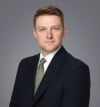Jannik Sinner doping case: Lessons from first instance decision

An independent tribunal (“Tribunal”) convened by Sports Resolutions has considered that the men’s world number one tennis player, Jannik Sinner, bears ‘No Fault or Negligence’ for two Anti-Rule Doping Violations (“ARDVs”). The decision in an important case in the ongoing evolution of anti-doping jurisprudence, particularly in the context of inadvertent doping violations.
The reasoned decision is available here.
While Sinner’s case is currently in appeal before the Court of Arbitration for Sport (“CAS”) by the World Anti-Doping Agency (“WADA”)[1], the author examines the decision to provide some key points for athletes to consider in order to maintain compliance with their anti-doping obligations.
To continue reading or watching login or register here
Already a member? Sign in
Get access to all of the expert analysis and commentary at LawInSport including articles, webinars, conference videos and podcast transcripts. Find out more here.
- Tags: Anti-Doping | Court of Arbitration for Sport (CAS) | Dispute Resolution | Italy | Tennis | Tennis Anti-Doping Programme (TADP) | United Kingdom (UK) | WADA Code | WADA Prohibited List | World Anti-Doping Agency (WADA)
Related Articles
- Anti-doping & boxing - Comparing the cases of Amir Khan and Connor Benn
- Peter Bol: A case study in the need for interpretation & transparency in WADA's testing policies
- A desperate race: The Zane Robertson EPO doping case and the unravelling of a dream
- Sport And Anti-Doping – Annual Review 2023/24
- Ensuring fair play in the sports courts – why we need disclosure guidelines in sports disciplinary proceedings
- Draining the doping swamp: sanctioning an athlete’s entourage using the WADA Code
- WADA’s 2025 Prohibited List: Context and key changes
Written by
Spencer Turner
Spencer is a barrister at 12KBW Chambers. His practice encompasses the full range of Chambers’ key specialisms, with a particular emphasis on personal injury, international and travel, industrial disease, sport, fraud and clinical negligence claims. He is recognised as a ‘Rising Star’ of the personal injury Bar by the Legal 500 and is described as having ‘already developed a practice that exceeds his seniority.’




